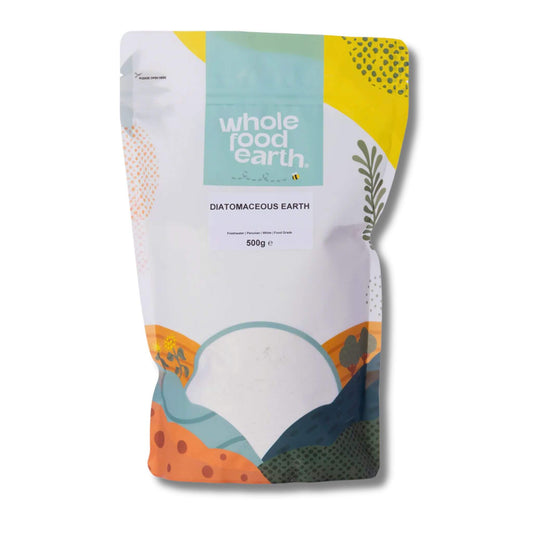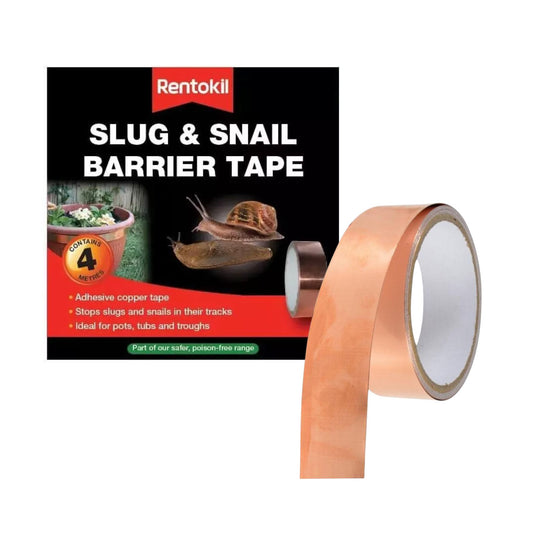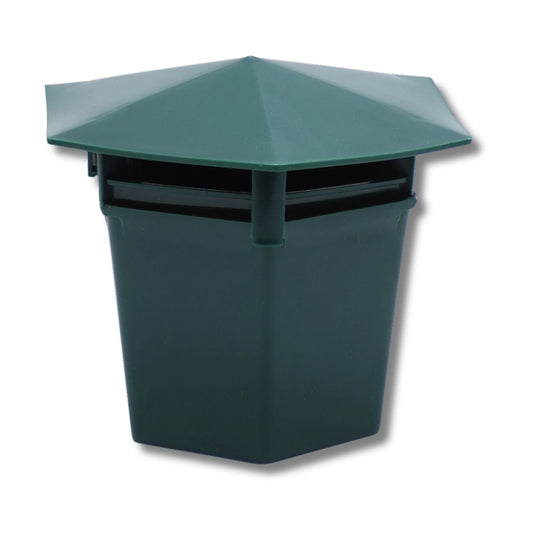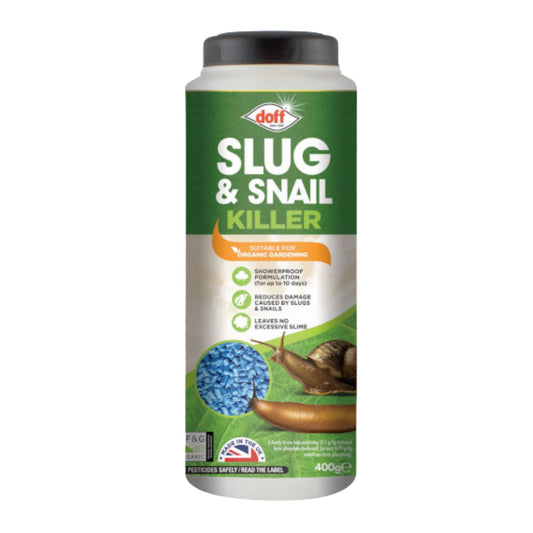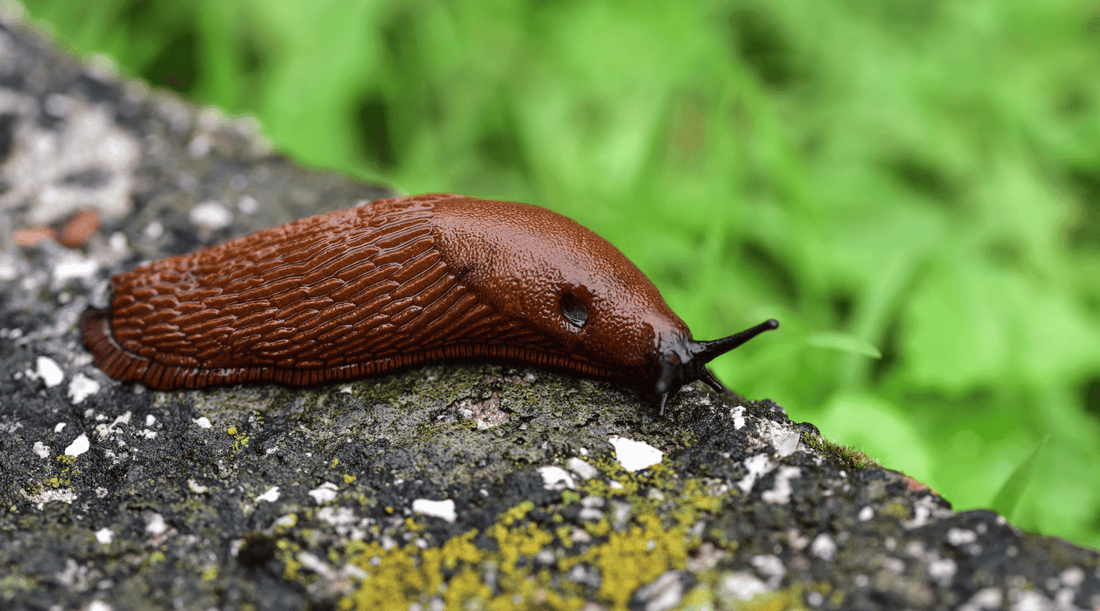
Expert Guide on How to Get Rid of Slugs Yourself
Share
Slugs in your garden can be a significant nuisance. They are great at eating organic matter, which makes them prone to causing considerable damage to plants and vegetables.
Fortunately, you can manage and control slugs without paying for the professionals. This guide provides clear steps to identify, prevent and remove slugs from your garden to ensure it remains healthy and thriving.
What Are Slugs?
Slugs are soft-bodied, slimy molluscs. They are invertebrates belonging to the class Gastropoda which includes snails and slugs. However, unlike snails, slugs lack a shell. This makes them more vulnerable to predators and environmental changes.
Slugs vary in size, colour and appearance. Most common garden slugs measure between 1 to 2 inches long and differ from whitish-yellow to black.

Slug Behaviour
Slugs are primarily nocturnal animals and prefer to eat during the night. They are omnivorous and play an important role in the garden's ecosystem where they play a role in recycling nutrients. Slugs enjoy eating decaying plant material, fungi and occasionally other small invertebrates. Despite their slow pace, slugs are adept at locating food using their senses. They rely on their tentacles to detect chemical signals in their environment.
Slugs can move with the help of a muscular foot. It's this foot that secretes a layer of mucus or slime which allows it to glide over surfaces smoothly. They have unique behaviours such as returning to the same resting spot after foraging. They are also known for their intricate mating rituals. This often involves elaborate dance-like movements and the exchange of spermatophores.
They thrive in moist, damp environments and are most active after rain to avoid dehydration. This is because they rely on moisture, which they expend during movement, to survive and prevent their bodies from drying out. Slugs may occasionally stray into your home through windows and doors or be found in places such as cellars.
Identifying Slug Infestations
Recognising the presence of slugs early can help you take prompt action to protect your garden. Here are the key signs to look out for:
Physical Sightings
Slugs are most commonly seen during the night or early morning when the garden is damp. They are also very easy to spot on cloudy, wet days. Look for their long, slimy bodies in the garden, particularly around plants, on paving and in shaded, damp areas.
Slime Trails
One of the most easy-to-spot signs of a slug infestation is the presence of slime trails. These silvery, slimy paths are left behind as slugs move and can often be seen on leaves, soil, and garden paving.
Damage to Plants
Slugs feed on a wide variety of plants, causing irregular holes in leaves, stems, and flowers. They particularly enjoy young, tender plants and seedlings. Look for chewed leaves, stems, and holes in fruits and vegetables which may all be key indicators of slug activity.
Preventing Slugs
Prevention is preferable for managing slug populations as well as protecting your garden. Here are several effective strategies that we recommend:
Reduce Moisture
As you know, slugs thrive in damp environments. This means that reducing moisture in your garden can help deter them. Water your plants early in the day to allow the soil to dry out by evening. Avoid over-watering and improve drainage in and around your garden beds.
Remove Shelter and Excess Vegetation
Slugs seek shelter in dark, damp places during the day. Clear away debris, stones, and leaves from your garden to reduce hiding spots. Keep grass, vegetation, weeds and other organic materials in check. Tidy up piles of wood and other materials where slugs may be able to hide.
Create Barriers and Remove Vegetation
Physical barriers can be effective in preventing slugs from reaching your plants. Consider using copper tape or copper mesh around the base of plants and garden beds. The copper reacts with the slug's slime, creating a mild electric shock that repels them. You can also use crushed eggshells, diatomaceous earth, or coarse sand around plants. This creates a rough surface that slugs find difficult to cross.
Natural DIY Slug Control
Natural methods are usually preferable before chemical solutions for managing slug infestations and protecting your plants. This is because they are generally safer for both your health and the environment. Here are several non-chemical methods to help control slugs:
Handpicking
Handpicking slugs is a simple and effective method. Go out at night with a flashlight and remove any slugs you find. Alternatively, go out regularly during the day and focus your attention on damp, dark areas.
Beer Traps
Slugs are attracted to the smell of beer. Bury a shallow container, such as a jar lid or a plastic cup, in the ground and fill it with beer. Slugs will crawl in and drown. Empty and refill the traps regularly. Alternatively, you can purchase a slug trap.
Natural Predators
Encourage natural predators of slugs, such as birds, frogs, toads, and hedgehogs, to visit your garden. Provide habitats and food sources to attract these creatures so that they help to control your slug population.
Diatomaceous Earth
This natural powder dehydrates and kills slugs upon contact. Sprinkle it around plants and along garden borders.
Chemical Solutions for Slugs
If natural solutions are not effective, chemical interventions may be necessary. Before using any chemical products, make sure you learn about the ingredients and potential side effects. Always read and follow the instructions carefully.
Slug Pellets
Slug pellets containing iron phosphate or metaldehyde can be effective in controlling slugs. Scatter the pellets around the garden, following the manufacturer's instructions carefully. Be cautious when using slug pellets if you have pets, wildlife in your garden, or young children, as some formulations can be harmful.

Cleaning and Repairing After Slug Infestations
After addressing the immediate infestation, thorough cleaning and repair are vital:
Remove Damaged Plant Material
Trim and remove any damaged leaves, stems, and plants affected by slugs. This helps to prevent the spread of disease and encourages new, healthy growth.
Improve Garden Health
Maintain healthy soil and plants to reduce the likelihood of future slug infestations. Use compost and organic fertilisers to promote robust plant growth. Ensure proper spacing between plants to improve air circulation and reduce dampness.
When to Use Professional Pest Control Services for Slugs
If your slug infestation persists despite your best efforts, you may wish to call in the professionals. Pest control services can offer more potent solutions and customised advice. This will ensure your infestation is handled quickly and effectively.
Final Thoughts
By implementing the strategies outlined in this guide, you can manage and prevent slug infestations in your garden.
However, remember that early identification and prompt action are key. Regular garden maintenance, reducing moisture, and using natural methods can reduce the risk of a slug infestation.
If these methods do not yield results try using chemical solutions such as slug pellets. Don't hesitate to seek professional help. Taking control of your garden will help maintain a healthy, slug-free environment.
At PestBuddy, we're here to empower you with safe, effective, and easy-to-use DIY slug control products. Explore our range of products to take control of your pest problems with confidence.

